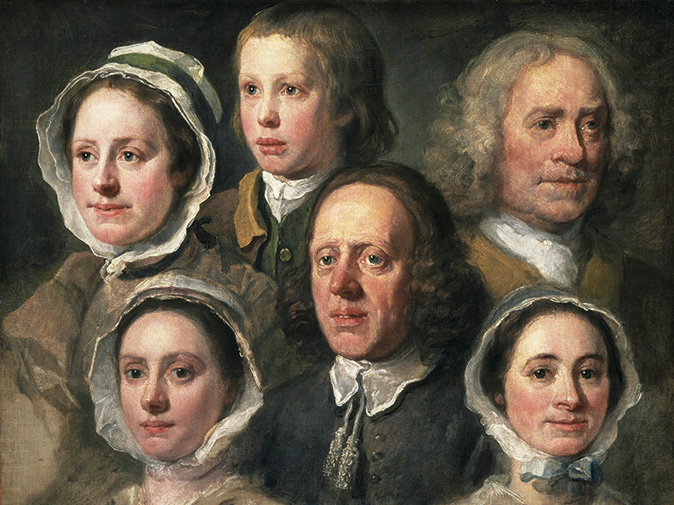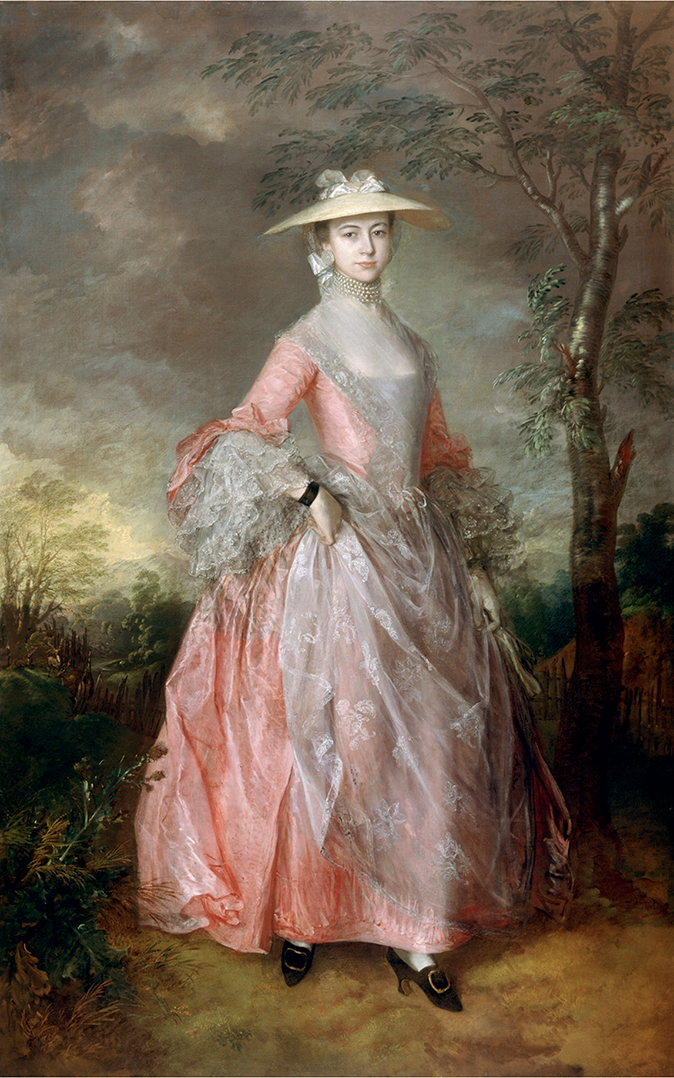My favourite painting: Jenny Uglow
'This is a tribute to the dignity and inner lives of “ordinary” people, profound and tender at once.'


Heads of Six of Hogarth’s Servants, 1750–55, by William Hogarth (1697– 1764), 25in by 29½in, Tate Collection
Jenny Uglow says: I like this painting because of its great humanity. Hogarth was a generous employer and his servants included old Ben Ives—perhaps the man on the top right—and a Mrs Chappel, who stayed with him for many years. Here, they have no names, yet their faces, formally arranged against the plain background, are full of personality: the two maids in front, flanking the footman and the young houseboy, who looks rather awed by sitting for his portrait. This is a tribute to the dignity and inner lives of “ordinary” people, profound and tender at once.
Jenny Uglow is a writer. Her most recent book, In These Times: Living in Britain through Napoleon’s Wars, 1793–1815, was published in 2014 and she is now working on a biography of Edward Lear
John McEwen comments on Hogarth’s Servants: Hogarth was the first internationally famous English artist, so why has he not been chosen for this page before? Especially as he personifies such perceived English virtues as humour, patriotism, libertarianism, respect for underdogs, distrust of snobs, intellectual or otherwise, conviviality, love of the theatre (the first to paint actors acting) and animals.
Can it be the curse of Kenneth Clark’s dismissal in the TV series Civilisation? ‘Plenty of animal spirits, but not what we could, by any stretch, call civilisation.’ To make the contemporary point, Clark contrasted Hogarth’s satire A Midnight Modern Conversation, an all-male drinking session, with the Frenchman de Troy’s picture of a group, crucially including five women, reading Molière.
Hogarth’s adulthood coincided with a shift in power from the Court and aristocracy to parliament and the City of London. his childhood in Smithfield, then still the site of the medieval St Bartholomew’s Fair, placed him at London’s seething centre. When his father, a Latin scholar and teacher, was imprisoned for debt like that of Dickens, the boy had to ‘shift’ for himself.
He discovered a new genre in ‘modern moral subjects’, which he marketed as prints, liberating artists by gaining copyright through lobbying for the 1735 Engraver’s Act. By his forties, he was England’s most successful and influential artist, founder of the artists’ co-operative that anticipated the Royal Academy.
Exquisite houses, the beauty of Nature, and how to get the most from your life, straight to your inbox.
The picture of his servants—maids and footman (front); housekeeper, page, butler (back)—may have been a sampler to show potential portrait clients. his virtuosity and virtues are equally declared; his sitters may be ‘servants’, but their portraits innovatively honour individuality. Clark might have noted the number of women.

My favourite painting: Norman Rosenthal
'Countess Howe became the woman of my dreams, and I would lie awake at night dreaming of unseen petticoats and

Hogarth at TATE Britain
Huon Mallalieu visits Tate Britain's new Hogarth exhibition, and is impressed by the first major show of this great English
Country Life is unlike any other magazine: the only glossy weekly on the newsstand and the only magazine that has been guest-edited by His Majesty The King not once, but twice. It is a celebration of modern rural life and all its diverse joys and pleasures — that was first published in Queen Victoria's Diamond Jubilee year. Our eclectic mixture of witty and informative content — from the most up-to-date property news and commentary and a coveted glimpse inside some of the UK's best houses and gardens, to gardening, the arts and interior design, written by experts in their field — still cannot be found in print or online, anywhere else.
